Email Personalization
Request a demoGetting your customers to convert on your store is one thing. Getting them there to start shopping is a totally different ball game – one you can accelerate with strategic emails and customization. LimeSpot supports email personalization on two levels.
The first is by inserting LimeSpot recommendation boxes on any type of email, including transactional emails. The second is by leveraging LimeSpot audience segments to send tailored emails to different sections of your customer base, based on their browsing, buying behavior, and / or their referral source / UTM.
Learn about the ways to personalize your email strategy and drive sales with LimeSpot.
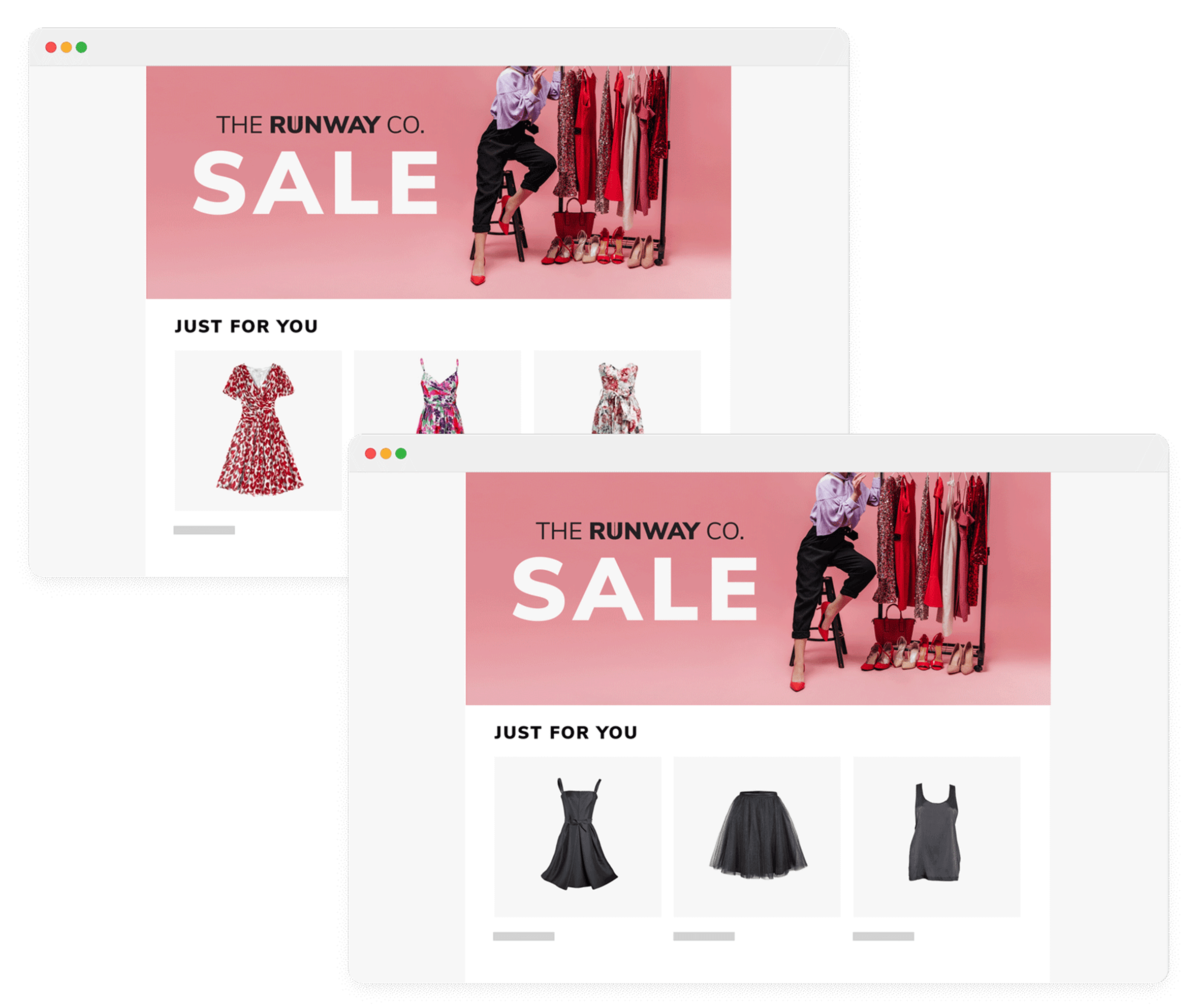
A clothing store could promote a new collection drop with recommendations based on their customers' browsing / buying behavior. A customer that has commonly bought colorful and printed items will see different recommendations than a customer who has largely stuck to basic black and white.
Promotional Emails - Recommendations
Include 1:1 recommendations in customer promotional emails based on their past browsing behavior and / or purchase history.
How it works
When you're sending out promotional emails, such as for a sale or new collection release, serve up a more tailored experience by including recommendations tailored to that customer's buying habits or previous purchases. It's as simple as adding LimeSpot recommendation boxes and letting our AI do the work. You can also control the layout and styling of your LimeSpot recommendation boxes from mobile to desktop to ensure an optimal viewing experience.
How to do it
Go to the Personalized Emails section of LimeSpot and set up your recommendation boxes. Then simply copy and paste the code into your email client. We recommend using the 'New Arrivals' box if you're promoting new arrivals. Need an extra hand? Check out this help article to learn how to get started.
Best practices
You can insert different styles of LimeSpot recommendation boxes according to your email layout. Want to showcase a gallery of items? Choose the grid layout. Or make recommendations more subtle by adding in a simple row to the bottom of whatever you're promoting.
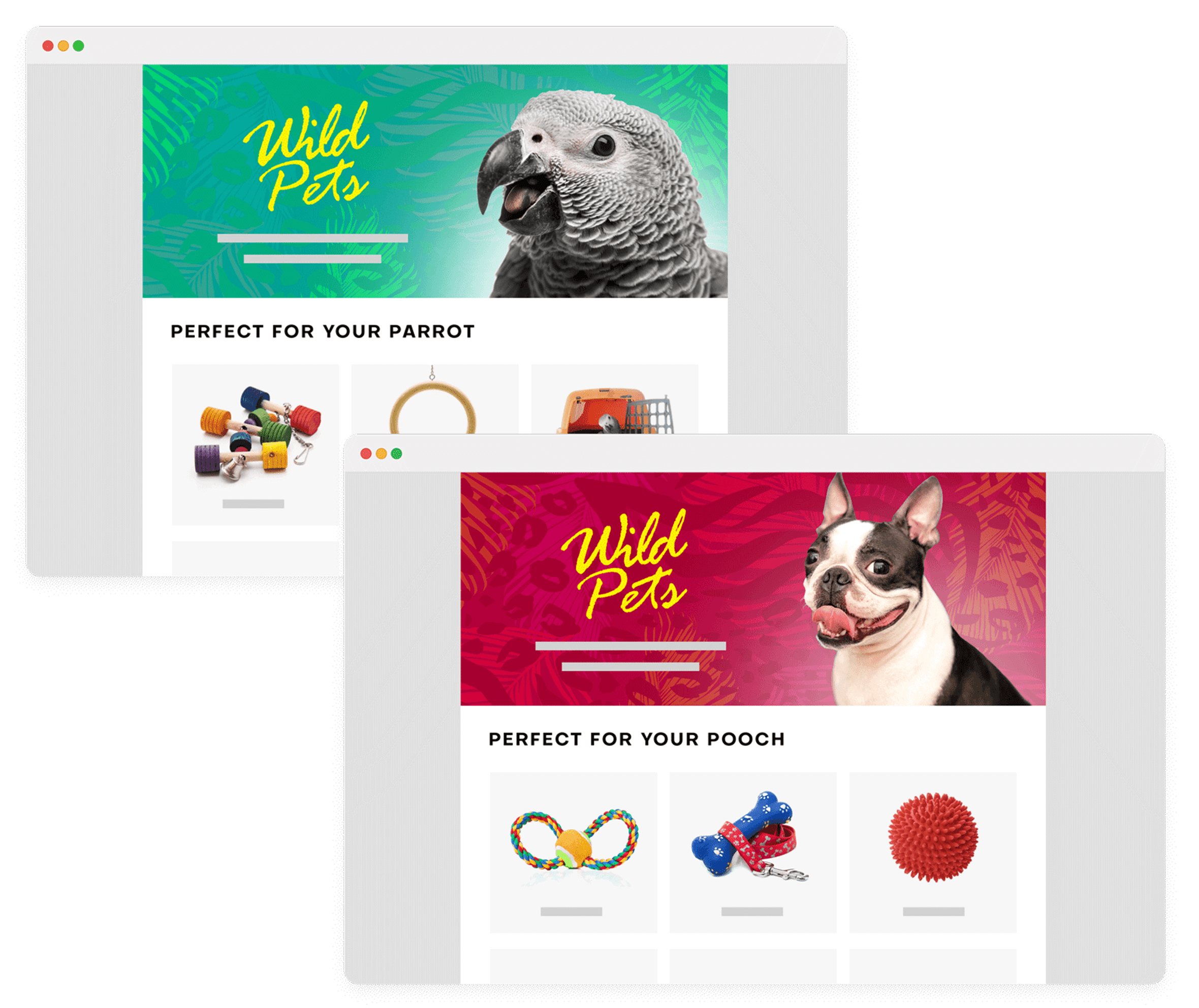
A clothing store that's featuring a new collection drop could tailor the look of the email according to each customer's style preferences. A customer that commonly browses athletic wear will see the new athleisure pieces prominently at the top, while a customer interested in office style will see the blazers and work pants.
Promotional Emails - Content Personalization
Promote the products to each customer that they're most likely to be interested in with personalized hero imagery and featured items.
How it works
LimeSpot audience segmentation lets you create segments based on how your customers are interacting with your store's product catalog. Then, you can decide what to promote in your email marketing campaigns to each segment. For example, send an email to customers who have largely browsed or bought items on sale. These customers will see the products that are now discounted at the top of the email. Meanwhile customers that have largely bought full price items will see the latest new arrivals at the top instead.
How to do it
From the LimeSpot Admin → Audiences section, build out your audience segments according to the behavioral and / or demographic characteristics that suit your strategy. This can be related to browse and / or buy behaviors, or even where they came from, such as TikTok versus a blog article. Then you can export these segments and upload them to your email client to send tailored emails according to each segment. Check out this help article to learn more about Audiences.
Best practices
Start with broad segments to get the hang of it, then you can get increasingly granular once you better understand how your customers are interacting with your store. For example, start with segments of customers who have / have not bought from you before, then drill down more specifically into what types of products they're interested in.
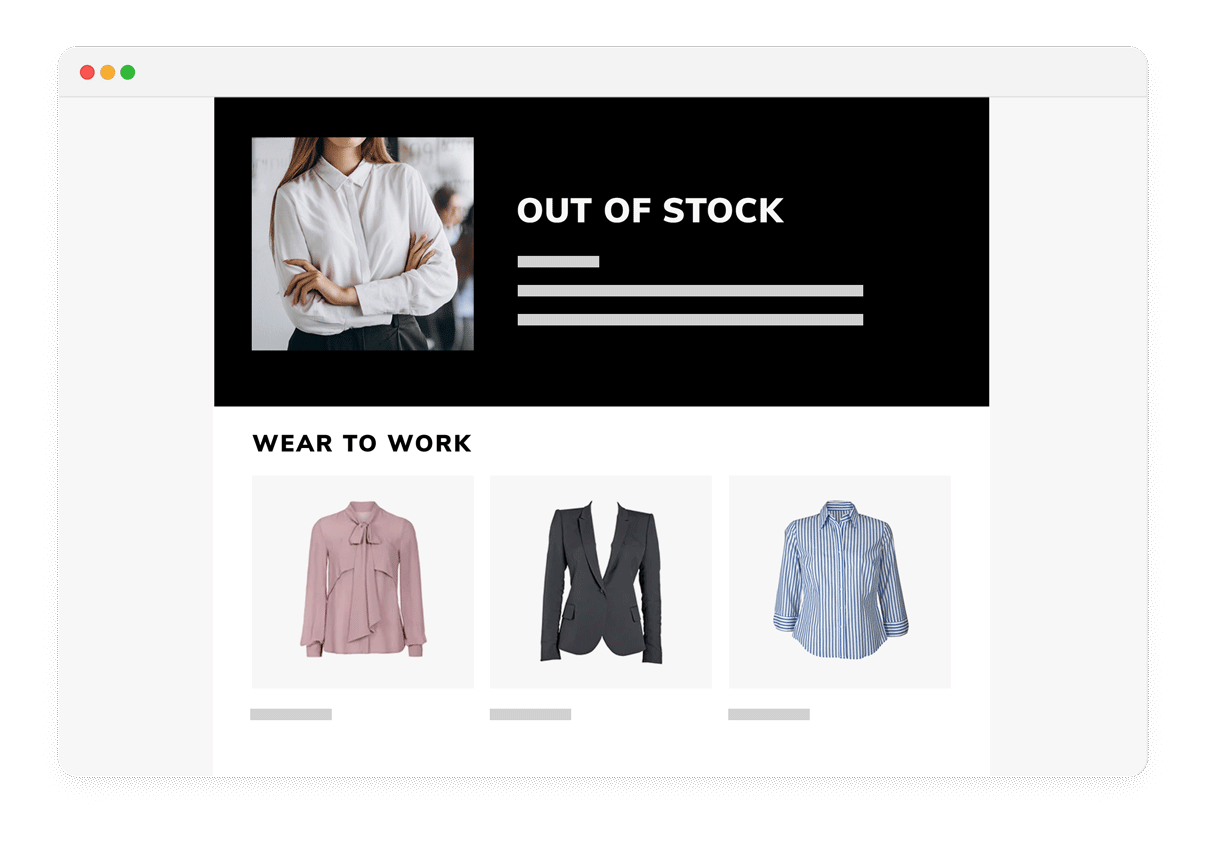
A pet supplies store lets their customers know that their dog food is back in stock. Alongside the featured product, a customer who has previously bought other pet products (cat food, for example) is also shown an AI-based 'You May Also Like' box with relevant product suggestions.
Out-of-stock Emails
Notify your customers when an item they're looking for is back in stock, and include a recommendation box to suggest other products based on their interests.
How it works
Integrating back-in-stock emails into your workflow is a great way to reduce friction from the buyer experience. This is especially relevant if your store relies on a limited run of products, such as batches or custom drops. When customers have signed up to be notified that a product is back in stock, add a LimeSpot box into that email. Then, even if that one product isn't the fit, you're offering alternatives for them to consider.
How to do it
Go to the Personalized Emails section of LimeSpot and set up your recommendation boxes. Then simply copy and paste the code into your email client. We recommend using the 'Recently viewed' or 'Bought together' boxes if you've got information about the customer, or the 'Trending now' or 'Best sellers' if you don't. Need an extra hand? Check out this help article to learn how to get started.
Best practices
In back-in-stock notifications, the customer has already expressed interest in a particular item, so lean into that. Make sure there's a super clear call-to-action button to add that product to cart. Then, when you include LimeSpot boxes, present them as alternatives – either in case the item is not exactly what they're looking for, or to complement the original item.
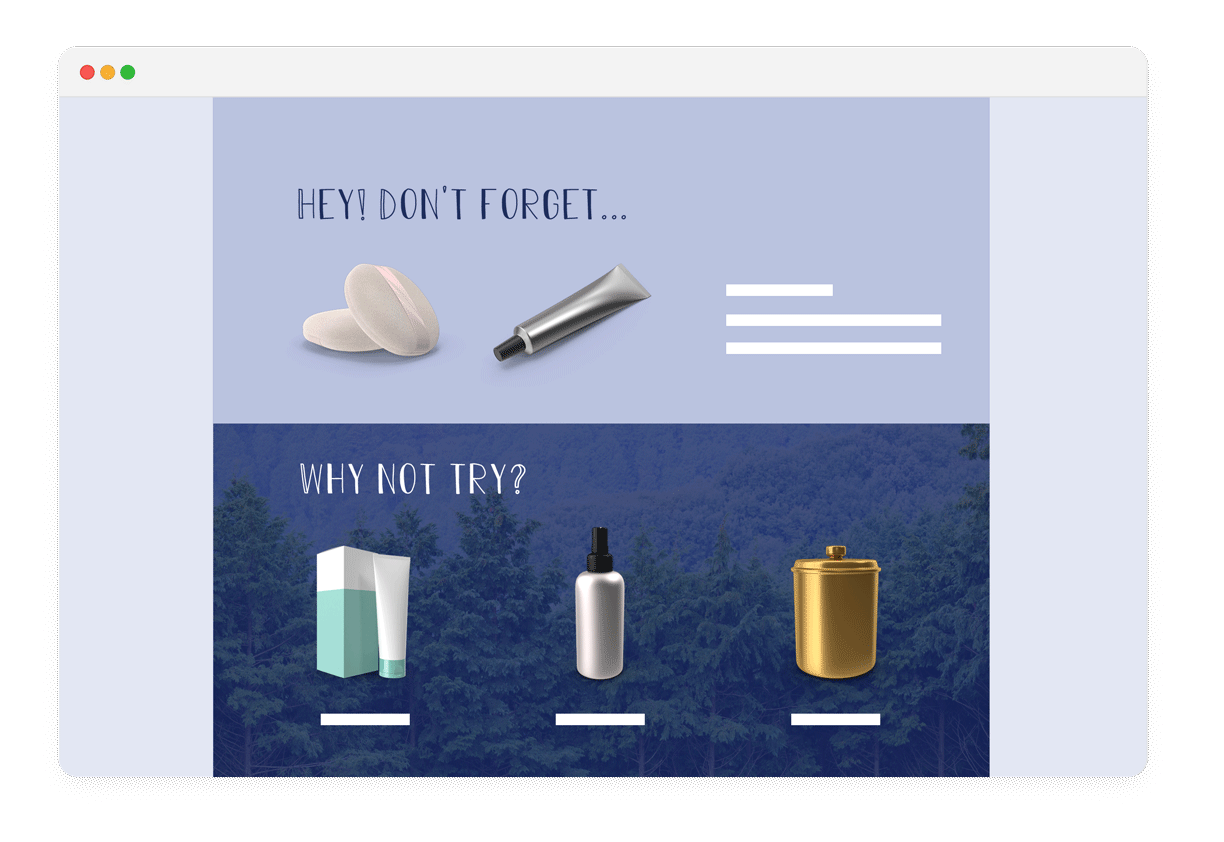
A home goods store could remind a customer of the items they left in their cart. Given that the customer has browsed tableware items in the past, recommendations at the bottom of the email are tailored to include similar items, such as bowls and serving trays.
Abandoned Cart Emails
Remind customers about their abandoned cart with an email that includes product suggestions to nudge them along the path to purchase.
How it works
Abandoned cart emails are a key tool for converting hesitant customers into loyal shoppers. Use LimeSpot to offer recommendations based on what's in their cart, or on their previous browsing or buying history. This gives them a nudge towards completing their purchase, and offers a chance to add one or two more items to cart as well.
How to do it
Go to the Personalized Emails section of LimeSpot and set up your recommendation boxes. Then simply copy and paste the code into your email client. We recommend using the 'Recently viewed,' 'You may also like,' or 'Bought together' boxes if you've got information about the customer, or the 'Trending now' or 'Best sellers' if you don't. Need an extra hand? Check out this help article to learn how to get started.
Best practices
There are tons of strategies to entice customers to complete a purchase. While you can use discounts to lower prices, consider making sure your abandoned cart emails highlight cross-sell or complementary products – this helps increase average order value. If you know the customer has previously bought from you and therefore trusts you, go a step further with upsell recommendations of pricier versions of items in their cart.

A clothing store thanks their customer for their recent purchase and includes relevant product recommendations at the bottom of the email based on the purchased item – for example, shoes that would go with the pants they bought.
Post-purchase Emails
Thank your customers for their purchase and include 1:1 personalized recommendations to encourage return visits.
How it works
Shortly after a customer has bought from your store, send a follow-up thank you that encourages them to return to your store and make their next purchase. This is a good opportunity for cross-sells and complementary product recommendations. LimeSpot will present product suggestions based on their purchase, and what other customers have bought in similar situations.
How to do it
Go to the Personalized Emails section of LimeSpot and set up your recommendation boxes. Then simply copy and paste the code into your email client. We recommend using the 'Bought together' or 'You may also like' boxes. Need an extra hand? Check out this help article to learn how to get started.
Best practices
Include recommendations at the bottom of post-purchase emails after the main message. Your customers want to see confirmation of their order before they see anything else. Keep LimeSpot boxes subtle and let customers explore on their own terms.
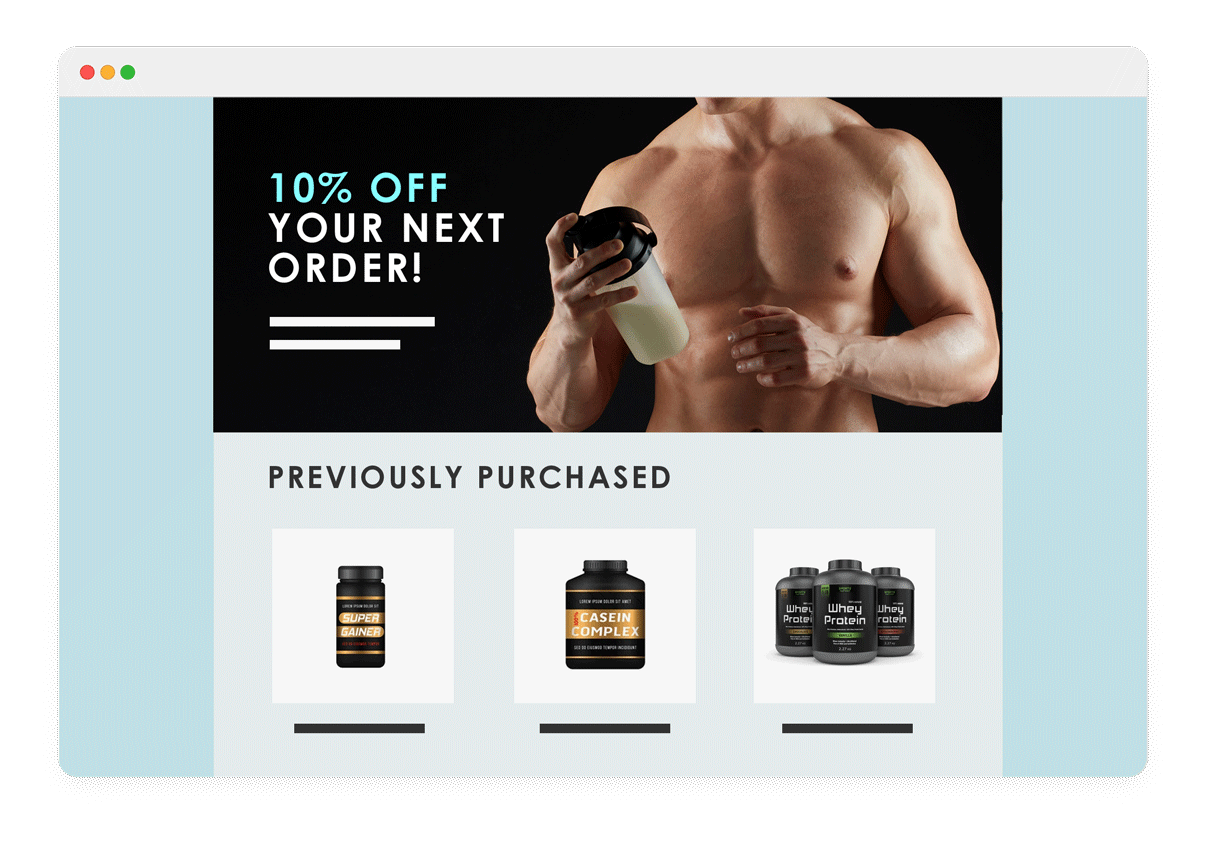
A beauty and skincare store could reach out to customers who bought from them 12 months ago, but haven't been back since. The customer that bought body lotion and face wash is encouraged to come back with a discount code, alongside recommendations for other related items that they might want to stock up on.
Reactivation Emails
Entice your inactive customers to return to your store by reminding them of items they previously bought or browsed.
How it works
Stores that sell consumable products (such as food, skincare, or pet supplies) often operate on a repeat purchase cycle. Reactivation emails are a great way to capture your past customers after a strategic amount of time and invite them back to shop again. Personalized recommendations help by both reminding them of what they bought and offering product suggestions to build up a fuller cart.
How to do it
Go to the Personalized Emails section of LimeSpot and set up your recommendation boxes. Then simply copy and paste the code into your email client. We recommend using the 'Recently purchased,' 'Recently viewed,' 'Bought together,' or 'You may also like' boxes if you've got information about the customer, or the 'Trending now' or 'Best sellers' if you don't. Need an extra hand? Check out this help article to learn how to get started.
Best practices
If your customers have lapsed into inactivity, test out different strategies to appeal to them. Try discount codes, bonus loyalty points, free gifts, or free shipping – something to add that extra bit of value to pull them back to your store. Also, consider adding more than one LimeSpot box to reactivation emails to maximize the chances of showcasing something the customer is interested in – for example, include both "recently viewed" and "trending now" together.
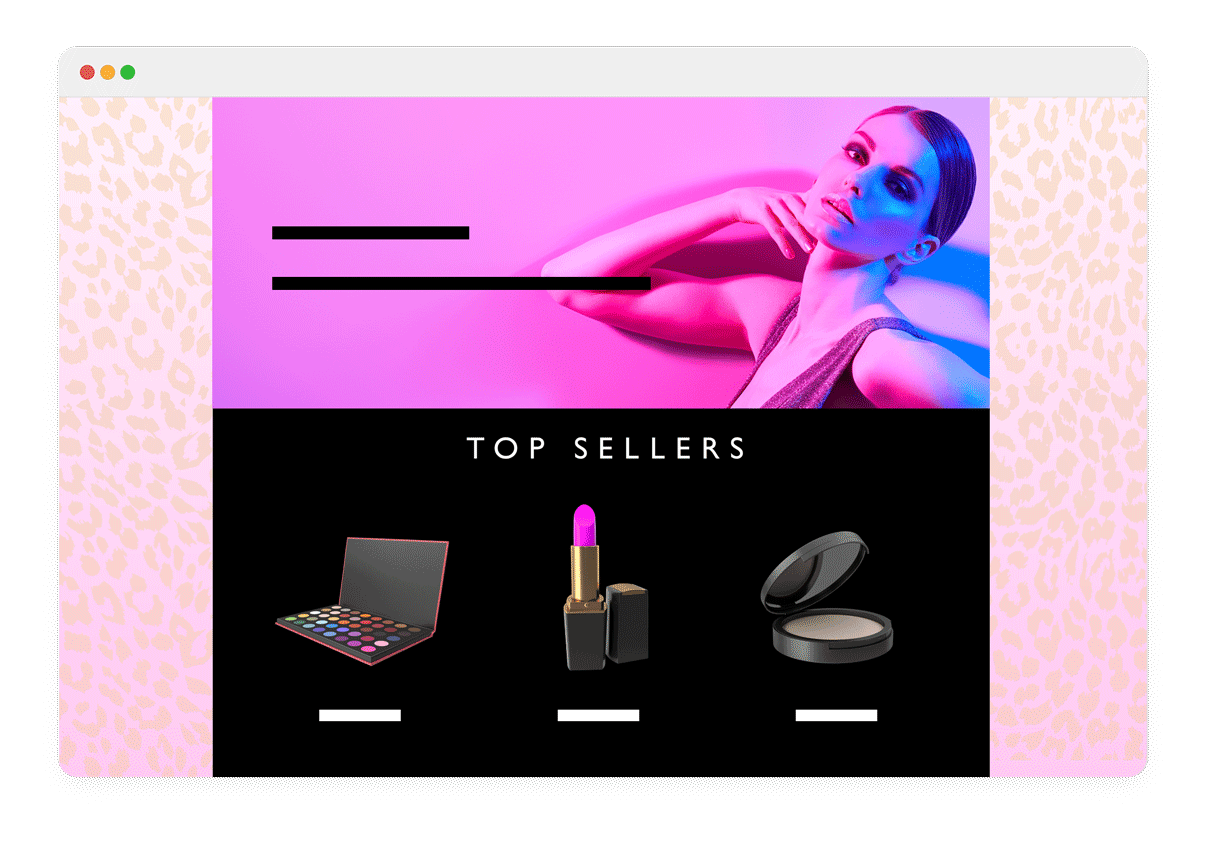
An electronics store could let customers know about best selling items each month. A customer interested in cameras and photography gear is served up bestselling items from that category, while another customer interested in laptops and accessories sees a different array of trending products.
Bestseller Emails
Keep your customers engaged and informed about trending products in your catalog relevant to their interests.
How it works
Bestseller emails are a great way to leverage the power of social proof. Include a LimeSpot recommendation box to serve up 1:1 personalized suggestions of the hottest products in your catalog. For customers that don't yet have a profile, LimeSpot will also generate recommendations, and then learn more as the customer interacts with your store.
How to do it
Go to the Personalized Emails section of LimeSpot and set up your recommendation boxes. Then simply copy and paste the code into your email client. We recommend using the 'Best Sellers' box, which can be personalized for customers with a user profile. Need an extra hand? Check out this help article to learn how to get started.
Best practices
Use bestseller emails on a schedule that makes sense for your business. This could be anything from a weekly email to a monthly digest. Figure out what works for your audience to keep them updated regularly without overwhelming inboxes. LimeSpot does all the work to match the best products with each individual customer, so you can send one email to all your mailing list subscribers and know everyone is getting a great experience.
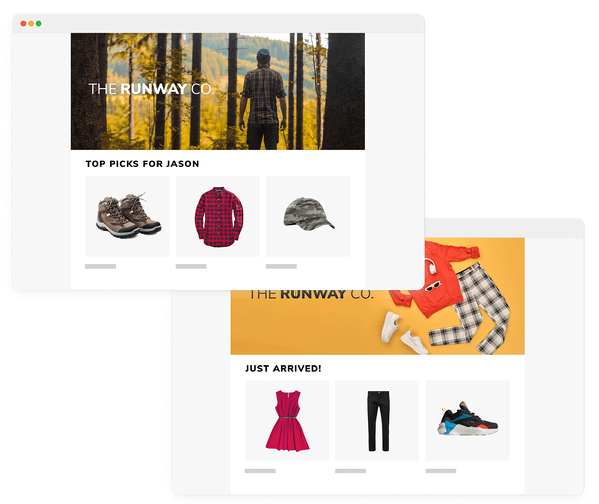
An activewear store could send out a regular newsletter highlighting new blog content with personalized recommendations to related products. Each customer would see a different mix of products tailored to them – based on their past behaviors as well as real-time product popularity and inventory status.
Live Emails
Keep your email content up-to-date and relevant by using live emails that pull in the latest product information at the moment of opening.
How it works
Live emails are a powerful tool that allows the content within an email to update in real-time. This means that when a customer opens an email, they see the most current product recommendations, pricing, and availability – even if the email was sent days or weeks ago. LimeSpot's live email functionality ensures that the personalized recommendations are always relevant and up-to-date, taking into account the latest inventory levels, trending products, and the customer's most recent interactions with your store.
How to do it
Go to the Personalized Emails section of LimeSpot and set up your recommendation boxes with live email enabled. Then simply copy and paste the code into your email client. The recommendations will automatically update each time the email is opened to reflect current inventory, pricing, and personalization based on the customer's latest behavior. Need an extra hand? Check out this help article to learn how to get started.
Best practices
Live emails are particularly useful for newsletters, digest emails, or any campaign that customers might open multiple times or refer back to later. They're also great for stores with fast-moving inventory or frequent pricing changes, as they ensure customers always see what's actually available. Consider using live emails for your regular touchpoints like weekly newsletters or monthly digests to maximize their long-term value.
Explore more of the guide
With so many possibilities, we get it can be hard to figure out where to start. That's why we've created this handy idea guide, to give you plenty of inspiration for all the ways you can use LimeSpot and level up your personalized shopping experience.
Cross-sell and Upsell
Boost your store's average order values by 10% easily.
Recommendations Merchandising
Remove friction from the buyer journey.
Segmented Experiences
Tailor experiences throughout the buyer journey.
Targeted Promotions
Personalize your promotional strategy.
SMS Personalizations
Personalized product recommendations via SMS.
Ready to Delight Your Customers and Boost Sales?
Transform your e-commerce experience with Intelligent Merchandising today.
Unlock the full potential of your online store by delivering personalized experiences that engage, convert, and retain customers.